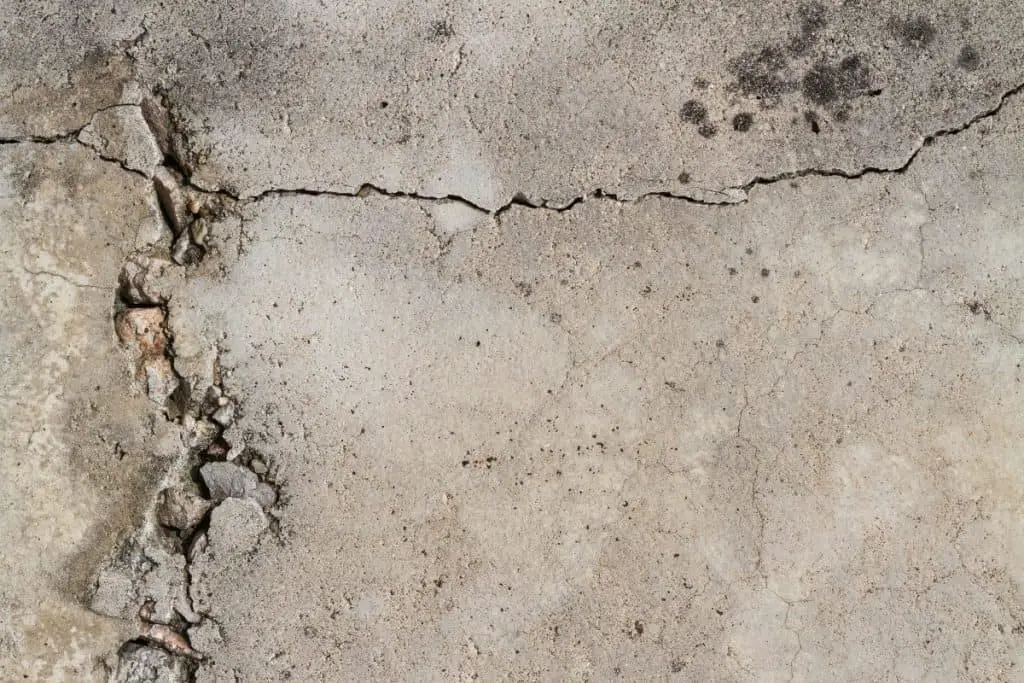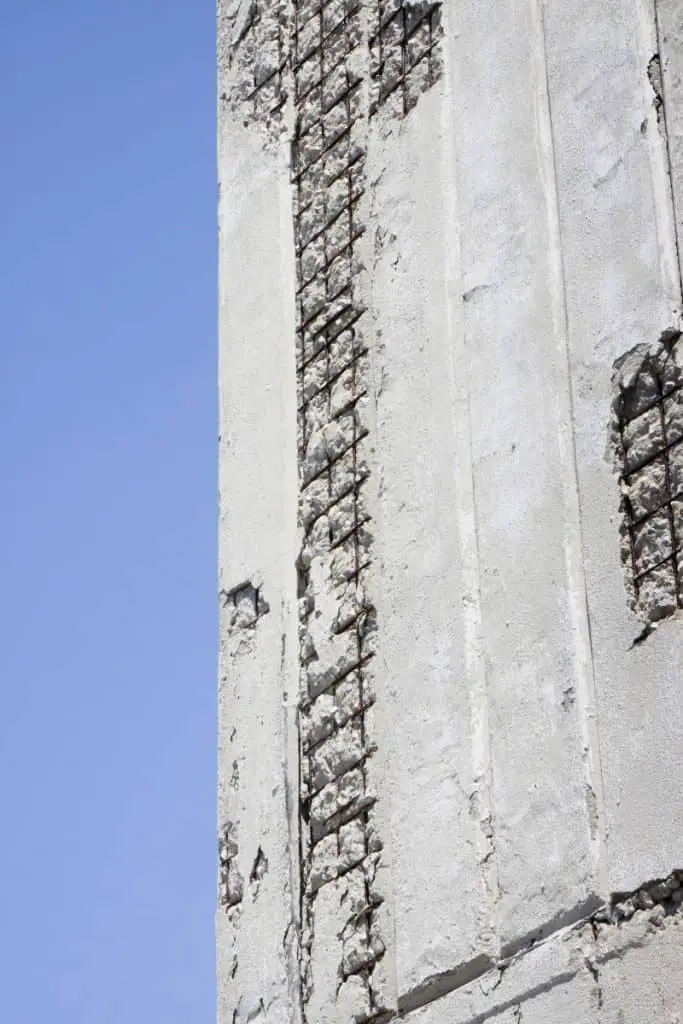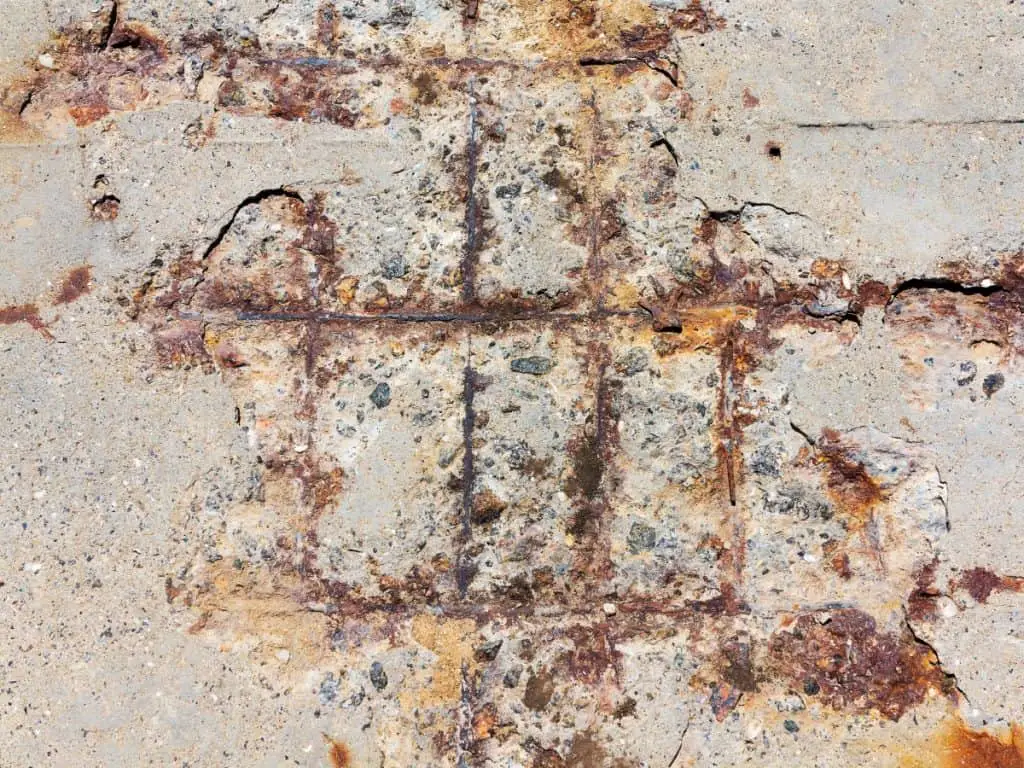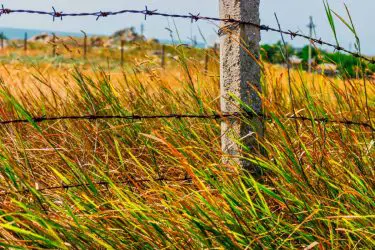Growing up in an old city, I have walked by and seen my fair share of concrete buildings that look like they are falling apart. I’ve even some unstable structures like basements and foundations found underneath houses. When concrete looks weak and dry enough that you can take off your own piece, it is called spalling. But what exactly causes a stable structure and mixture like concrete to become brittle and unstable looking?
Concrete can spall when the concrete and/or its reinforcing is placed incorrectly. It can also occur when unwanted chemical reactions occur in the embedded metal of the concrete matrix. Corrosion, caused by water or chemicals, of the substances that make up the concrete can also lead to spalling.
To understand more as to what small occurrences build to the flaking and falling off of sturdy concrete from a structure, this article is for you.

Table of Contents
What Is Concrete Spalling?
Concrete spalling is when small parts of the larger body of concrete flake off due to damage internal damage.
Spalling concrete tends to look like circular impressions in the concrete itself resembling missing chunks or thin, skinny pieces missing from the surface of the concrete.
It is a fairly common circumstance that a lot of people face. It is most common in cold environments due to the extreme temperature changes.
Incorrect Placements
When pouring concrete, there must be a layer of reinforcement placed down first to give the structure strength to hold up the weight that will be inflicted on it.
This reinforcement usually consists of steel bars or welded wire fabric in the shape of a grid to provide an even distribution of weight over the surface.
Without this reinforcement, the concrete will crack due to tension forces.
Most spalling issues occur when there is not enough depth of concrete to cover over the layer of reinforcement.
For all projects, there is a base level of height needed for the concrete to have the concrete successfully carry out its intended use for years to come.
For example, you need to at least have a depth of 4 inches of concrete when making a driveway. When there isn’t enough depth to the layer of concrete, it places more unwanted stress on the concrete, and steel reinforcement, that it cannot withstand which leads to spalling and cracking.
To the same effect, when the concrete that is poured over the reinforcement is of low quality, the concrete is more likely to spall. Different concrete can withstand different measures of PSI, or pounds per square inch. Regular concrete usually has the strength to withstand 2,500 to 5,000 PSI with anything less than that being too weak to hold many structures.

Depending on the intended use of the concrete, you will need concrete that is strong enough to support the pressure and tension it will be under. If not planned out correctly, the concrete used to pour a slab will be too weak to undertake the weight it will be put under.
What can also contribute to the weakness of concrete is the mixture of it. The needed consistency of concrete should be smooth and consistent; not too dry and not too liquid. If a concrete mixture is too dry, it will then dry too quickly which can lead to the weakness of the said concrete.
Chemical Reactions
Unwanted chemical reactions can occur in the concrete matrix (the chemical structure of the concrete comprising of the aggregate and binder) to cause spalling. One common chemical reaction that occurs in cement is the alkali-silica reaction, or best known as “concrete cancer”.
Most concrete pastes contain a high amount of alkaline that can mix with and create a reaction with the silica that is found in the aggregate mixture of the actual concrete when given moist or wet conditions within the cement.
Corrosion Of Concrete
Concrete is a porous substance, meaning it contains little nooks and crannies in the structure of the concrete itself. This characteristic of concrete makes it very susceptible to water to get into these pore-like structures in concrete. Water trapped in moist concrete creates an array of problems that can lead to the corrosion of concrete which in turn creates spalling.
For instance, when wet or moist concrete is exposed to the cold especially in winter, this can cause the water in the concrete structures to expand by 9 percent and create tremendous pressure in the concrete.
When the water eventually thaws, it goes back to its normal structure and relieves the pressure inside the concrete. With this fluctuation of freezing and thawing, called the freeze-thaw cycle, inside of concrete, it can eventually lead to the expansion and spalling of concrete.
Wet or moist concrete can also lead to the rusting of the steel grid reinforcement in the concrete structure. Rusting usually occurs when the metal is exposed to oxygen with water or moisture.

Rust is a type of corrosion that causes the steel to expand and take on added pressure due to the newly added layer on the metal which in time will lead to the cracking and spalling of concrete.
Also read: Rust Stains on Concrete: Causes, prevention, and repair info
Some chemicals, like ones found in de-icing products, can also lead to the breakdown of important chemical bonds in the composition of concrete which will in time lead to the spalling of concrete.
How to prevent concrete spalling
- Make sure your concrete mix is the right consistency; not too dry, not too wet.
- Wait the correct amount of time to have the concrete cure completely.
- Seal the concrete with a water-proof sealer to prevent water from causing corrosion inside the structure.
- Install control joints, also known as contraction joints, to allow concrete to crack, but in an intended safe area.
- Check for wet/moist concrete often.
- Don’t use de-icing chemicals when possible.
- Check for signs of cracking and spalling early in order to patch them up before they get too big.
- Check structural plans of concrete before executing the project.



